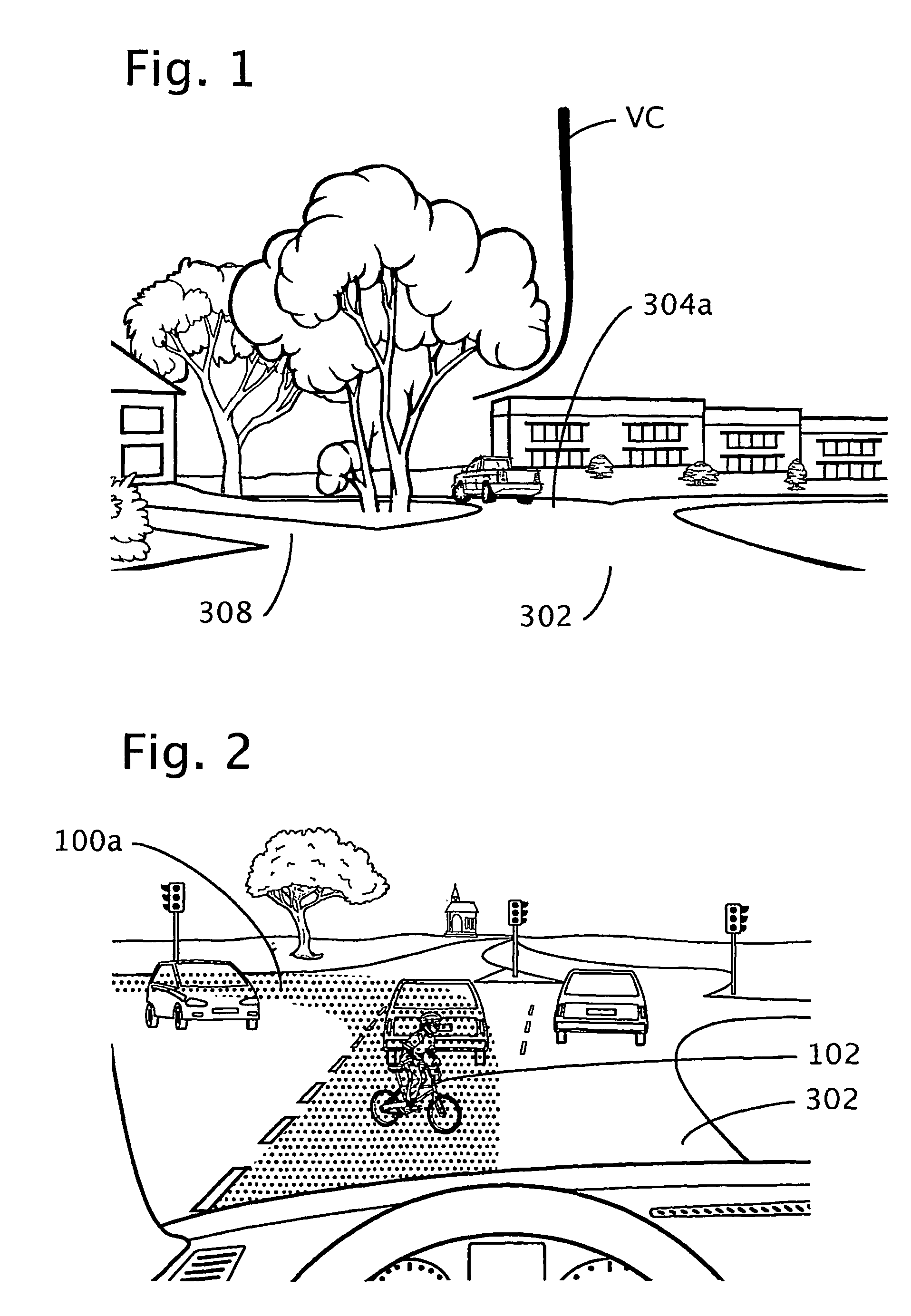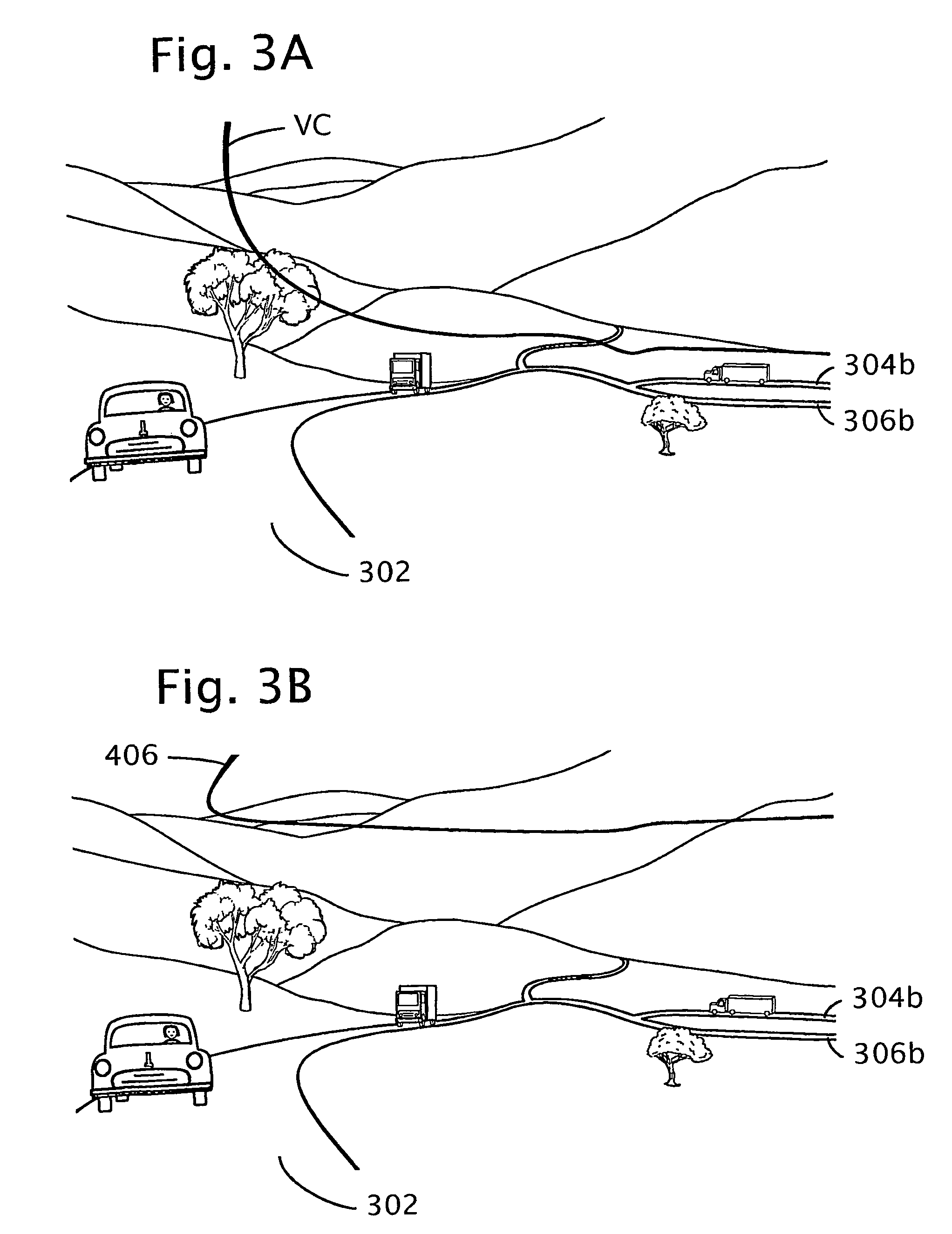En-route navigation display method and apparatus using head-up display
a display method and head-up display technology, applied in the direction of navigation, instruments, surveying and navigation, etc., can solve the problems of reluctance of some drivers to use voice command-based systems in their every-day life, distraction during driving a motor vehicle can be dangerous, and be found distracting, annoying or ambiguous by many people, so as to achieve easy observation, maintain the minimally distracting character of the line, and be less distracting
- Summary
- Abstract
- Description
- Claims
- Application Information
AI Technical Summary
Benefits of technology
Problems solved by technology
Method used
Image
Examples
Embodiment Construction
1.0—Overhead Navigation Cable
[0130]The following is a detailed description of an illustrative embodiment of the invention. The illustrative embodiment involves the use of the invention in a motor vehicle context. Indeed, we expect that the invention will find its main use in motor vehicles. Thus for consistency of terminology and to keep the description simple, the term “driver” is principally used when referring to the human user of the system to whom the virtual cable is displayed. However, as noted above, the invention is potentially useful in other, non-motor-vehicular applications for which the “user” may not be a “driver.” Moreover, some operations that may be performed during the use of disclosed system, such as downloading of information, may be carried out in a motor-vehicular application but not by a person who is then driving the vehicle and / or may be performed outside of the vehicle altogether. Thus the term “driver” is used herein only for illustrative purposes and is n...
PUM
 Login to View More
Login to View More Abstract
Description
Claims
Application Information
 Login to View More
Login to View More - R&D
- Intellectual Property
- Life Sciences
- Materials
- Tech Scout
- Unparalleled Data Quality
- Higher Quality Content
- 60% Fewer Hallucinations
Browse by: Latest US Patents, China's latest patents, Technical Efficacy Thesaurus, Application Domain, Technology Topic, Popular Technical Reports.
© 2025 PatSnap. All rights reserved.Legal|Privacy policy|Modern Slavery Act Transparency Statement|Sitemap|About US| Contact US: help@patsnap.com



